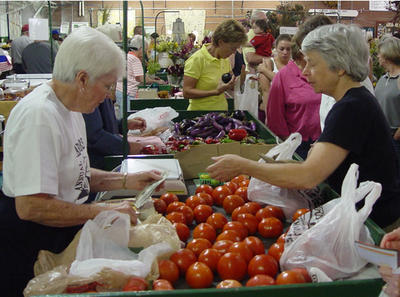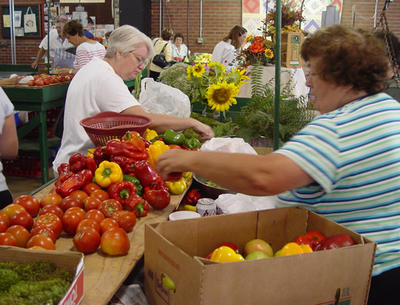The council is in a quandary about what to do, so while they're waiting for another engineering report, I thought I'd try to organize my scattered thoughts.
The Preservationist Perspective
A good place to start is with the Secretary of the Interior's Standard's for the Treatment of Historic Properties. They guide all federally-funded preservation projects, and they apply to WWMS because it's listed on the National Register of Historic Places, but they are enforceable only if federal money is involved in the renovation.
Here are the standards for preservation:
The city-proposed plan, euphemistically called "renovation," weakly meets only the first of these criteria: the stadium will still be a war memorial, will still be used for amateur sports as it was intended, and the proposed plaza in front of its impressive triple-arched entry will give it a possible new use, since the area, if carefully and amply designed, may accommodate any number of public, civic, or patriotic activities. But it meets the standard only in an attenuated way, bringing in 30 spectators for college baseball games when once it attracted thousands.
- A property will be used as it was historically, or be given a new use that maximizes the retention of distinctive materials, features, spaces, and spatial relationships. Where a treatment and use have not been identified, a property will be protected and, if necessary, stabilized until additional work may be undertaken.
- The historic character of a property will be retained and preserved. The replacement of intact or repairable historic materials or alteration of features, spaces, and spatial relationships that characterize a property will be avoided.
- Each property will be recognized as a physical record of its time, place, and use. Work needed to stabilize, consolidate, and conserve existing historic materials and features will be physically and visually compatible, identifiable upon close inspection, and properly documented for future research.
- Changes to a property that have acquired historic significance in their own right will be retained and preserved.
- Distinctive materials, features, finishes, and construction techniques or examples of craftsmanship that characterize a property will be preserved.
- The existing condition of historic features will be evaluated to determine the appropriate level of intervention needed. Where the severity of deterioration requires repair or limited replacement of a distinctive feature, the new material will match the old in composition, design, color, and texture.
- Chemical or physical treatments, if appropriate, will be undertaken using the gentlest means possible. Treatments that cause damage to historic materials will not be used.
- Archeological resources will be protected and preserved in place. If such resources must be disturbed, mitigation measures will be undertaken.
The guidelines call for "identifying, retaining, and preserving character-defining features" of the building. The National Register nomination for the stadium identified not only as its entry arches, but also the inverted "J" shape of the seating, distinctive because it is unique to the stadium. The decorated exterior masonry walls flanking the pylons are also significant, as are the distinctive windows, which still exist but have been blocked up. (You can see them on this old postcard). Finally, the canopy over the seating, though not original, has gained its own significance over time, and certainly makes watching afternoon games more pleasant.
In short, the city's proposal is a preservationist's disaster. Less will be left of the 85-year old stadium than remains of the Roman Colosseum.
At the council meeting, Bill Burckley asserted that most, if not all the significant features can be preserved for the $1.4 million the city has to spend on it, and that is why the council voted to get a second opinion on the state of the stadium's concrete. It would be great if he's right, but I have no idea whether he is.
The Neighborhood Perspective
The Aycock Neighborhood has spent a decade advocating for the preservation of the stadium, and even commissioned its own renovation plans (with a lot of help from friends like Preservation Greensboro). Its concern has been not only with the structure and its use, but its neighborhood setting. Neighborhood representatives served for years on a city-appointed task force that came up with not one, but three different plans for a "park within a park" to include not only the stadium but also the nearby tennis courts, Greensboro Farmers' Market, and the old VFW building across the street. The idea was to increase the public use of the stadium area and to use the stadium for occasional musical entertainment.
Although none of these facilities is in the Aycock Neighborhood per se, they adjoin it, and are identified as vital elements of our neighborhood life in our city-council-adopted Strategic Plan and Summit Avenue Corridor plan. While the neighborhood has been self-funding and carrying out many of the elements of those plans on its own (including streetscape improvements and signage), the city has yet to follow through on any of the promised capital improvements.
My sense is that, while the neighborhood cares very much about the preservation of the stadium, it sees it as only one element of a neighborhood improvement plan, and not the most important one. The Strategic Plan, based on a very open and careful public process, identified the improvement of Summit Avenue as our number one priority. Number 5 on that list was "prepare a plan for War Memorial Stadium and Veterans' Plaza". Veterans' Plaza is the area of public use proposed for the zone between the stadium and the Farmers' Market, and the neighborhood's current interest as a neighborhood in the stadium is mainly in that public space now that minor league baseball is gone.
Make no mistake, though: the stadium was a huge neighborhood asset when neighbors could walk on summer evenings to see the Greensboro Bats play. The city council, the Guilford County commissioners, and various city boosters at that time promised the neighborhood that the old stadium would continue to be a well-maintained and well-used neighborhood asset.
The Parks and Recreation / Greensboro Sports Commission Perspective
The Greensboro Parks and Recreation Department, which operates the stadium, has consistently been adamant (since minor league baseball left) that it wants to use it for one purpose only: amateur baseball. The primary tenants of the stadium have been NCA&T University and Greensboro College, along with some youth leagues (the infield is too big for little league). But Greensboro College has since moved on to greener infields, and the number of youth league games has declined as interest in baseball has waned.
Parks and Rec representatives on the stadium task force opposed using the stadium for other entertainments, citing wear and tear on the playing surface. And any hopes that the old stadium might attract such acts were crushed by Greensboro Coliseum manager Matt Brown, who stole a march on the WWMS renovation proponents by building the White Oak Amphitheatre, much of which he completed even before the city council knew about it.
Members of the Greensboro Sports Commission have said that there is no chance of bringing regional or national tournaments to the stadium, at least as long as Greensboro's new downtown stadium is standing. The old stadium simply cannot provide the amenities that modern athletes and fans expect (although downtown stadium boosters claimed in 2003 that "War Memorial Stadium would be an ideal location to host regional, state, and national baseball tournaments.")
Parks and Recreation and the Greensboro Sports Commission representatives have maintained that there is no need for more than a few hundred seats at WWMS, and their statements have turned out to be true for the stadium's use over the last seven years.
The Political Perspective
The current city council is facing a dilemma left to it by previous councils when they decided to build the downtown stadium and later the White Oak Amphitheatre. Those two votes assured that there wasn't and isn't going to be enough baseball or outdoor musical entertainment to make full use of the old stadium. The newer facilities have sucked the life out of the old one, and there is nothing the present council can do about that.
Even if WWMS received a full-scale preservation and rehabilitation, with all its architectural features returned to their former glory, it would still be a melancholy place -- its empty seats a silent testament to its own diminishment, and to our diminished feelings for the soldiers who died in a war almost 100 years ago that few recall or understand.
So the council will have to decide how to allocate resources to a large and expensive structure for which there is now very little use -- unless they can think of some new use for it, and make sure that it gets used.






